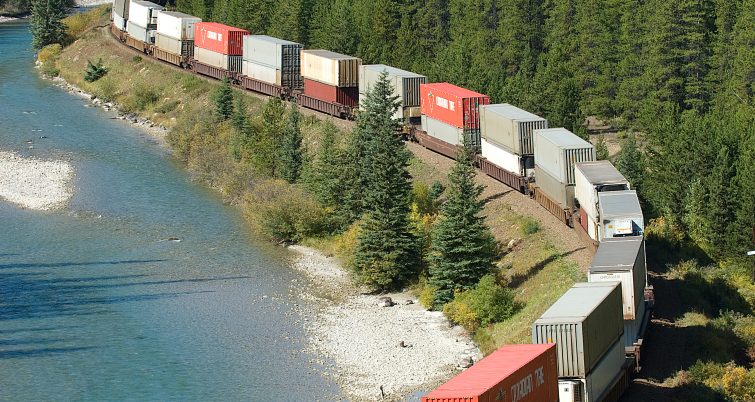Some shippers facing shortage of preferred 20-foot containers
Written by David C. Lester, Editor-in-Chief
Watching an intermodal train roll by at track speed gives one a quick look at all of the different sizes of containers. Why are there different sizes? What are the economic factors in play when choosing to use a particular size? These questions are beyond the scope of this article, but we’ll take a look at the advantages of the 20-foot container, the smallest container available, along with areas where shortages of this size container are frustrating shippers.
There are two issues to consider at the moment. First, 20-foot containers have a much lower tare weight than 40-foot containers, which allows more cargo to be placed in the trailer than in a 40-foot container, provided the cargo will fit in a 20-foot. This enables shippers to ship a substantial amount of heavy cargo without the truck exceeding road weight limits for first-mile pickup or last-mile delivery. Second, in some areas where heavy items are being shipped, there is a shortage of these containers.
Peter Friedman, executive director of the Washington, D.C.-based Agriculture Transportation Coalition says “There is a simple reason our members who ship both refrigerated and dry cargoes from all parts of the U.S. prefer 20-footers. They can carry more cargo than the 40-footers,” according to a report in FreightWaves.
Friedman went on to say that “usually ag and forest products do not need the extra space afforded by a 40-foot or 45-foot container. The 40-foot length adds the weight of an additional 20 feet of steel, plus more weight from required dunnage to hold the cargo in place. Thus, often the 40-footer actually can carry less cargo than a 20-footer in order to comply with weight restrictions imposed by the railroads and the federal state and highway authorities.”
Recently, shippers at several places in the country are having a hard time obtaining the 20-foot containers, particularly in the U.S. heartland. Andrew Hwang, the manager of business development and international marketing at the Port of Oakland says “intermodal service from the port area into the U.S. heartland is available, but volume is determined by the importers and where they want the cargo to end up. The vast majority of import 20-footers into Oakland tend to stay in California.”
This is a big advantage for agriculture producers in California. Hayden Swofford, an advisor to the Agricultural Transportation Coalition, and the executive director of the Pacific Northwest Asia Shippers Association in Washington state, says “For the most part we are fortunate in that most of our shipments are from coastal ports directly. The result is we have not had a big issue with equipment.”
The heartland has had a particularly significant struggle. Its geographic location makes a long truck haul necessary, since the containers they need come from major rail terminals in either Kansas City or Chicago. Once the trailers arrive in the heartland and are loaded, a return haul to the rail terminal is needed.
To make matters worse, the reduction of container ship sailings due to COVID-19 means that a lot of containers are stuck on ships, effectively taking them out of circulation. Shippers in the heartland will likely have to contend with this problem for at least several more months.
Source: FreightWays and American Shipper
For the latest railroad news, please visit rtands.com.





